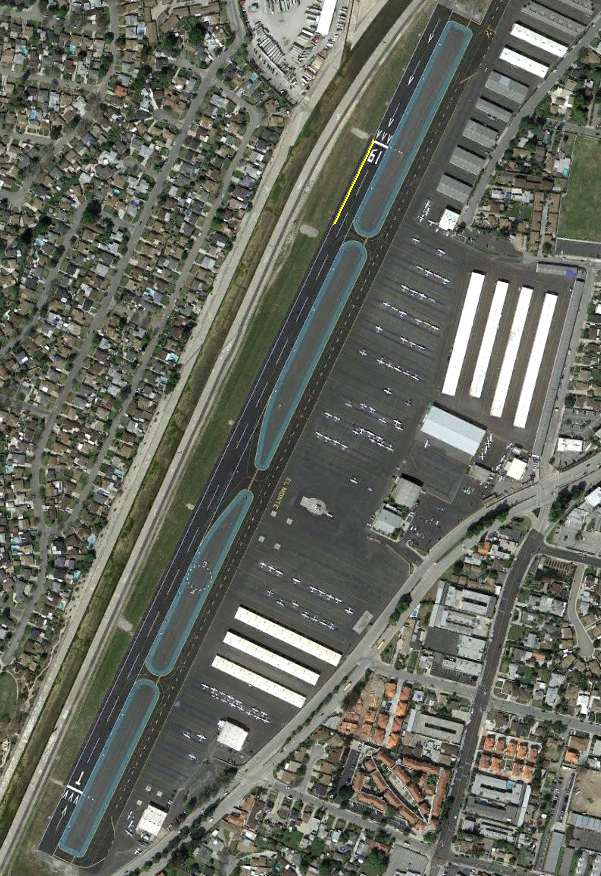The Practical Test Standard for private pilots specifies for normal and crosswind approach and landings:
Touches down within the available runway or water landing
area, within 400 feet beyond a specified point with no drift,
and with the airplane’s longitudinal axis aligned with and
over the runway center/landing path.
The distance requirement for a forward slip to landing is the same, but for short field landings, the distance is only 200 feet. To get an idea of that distance, you could find the length of a runway and estimate, or load up the area in Google Earth (or similar tools) and draw a 400 foot line. Try to then find a reference point.
 At El Monte Airport, that means that when using Runway 19, the midpoint of taxiway charlie (C) is about 400 from the landing threshold. I’ve generally found that examiners give a little leeway on these distances, but no leeway in landing prior to the landing threshold.
At El Monte Airport, that means that when using Runway 19, the midpoint of taxiway charlie (C) is about 400 from the landing threshold. I’ve generally found that examiners give a little leeway on these distances, but no leeway in landing prior to the landing threshold.
If you don’t feel confident of making the necessary touchdown point, a go around is recommended (and heck, that’s a required maneuver on the checkride too).
 Several members of our flying club have indicated an interest in going to AirVenture. I’ll be using this post to collect some of the distilled information for those who might be interested
Several members of our flying club have indicated an interest in going to AirVenture. I’ll be using this post to collect some of the distilled information for those who might be interested





